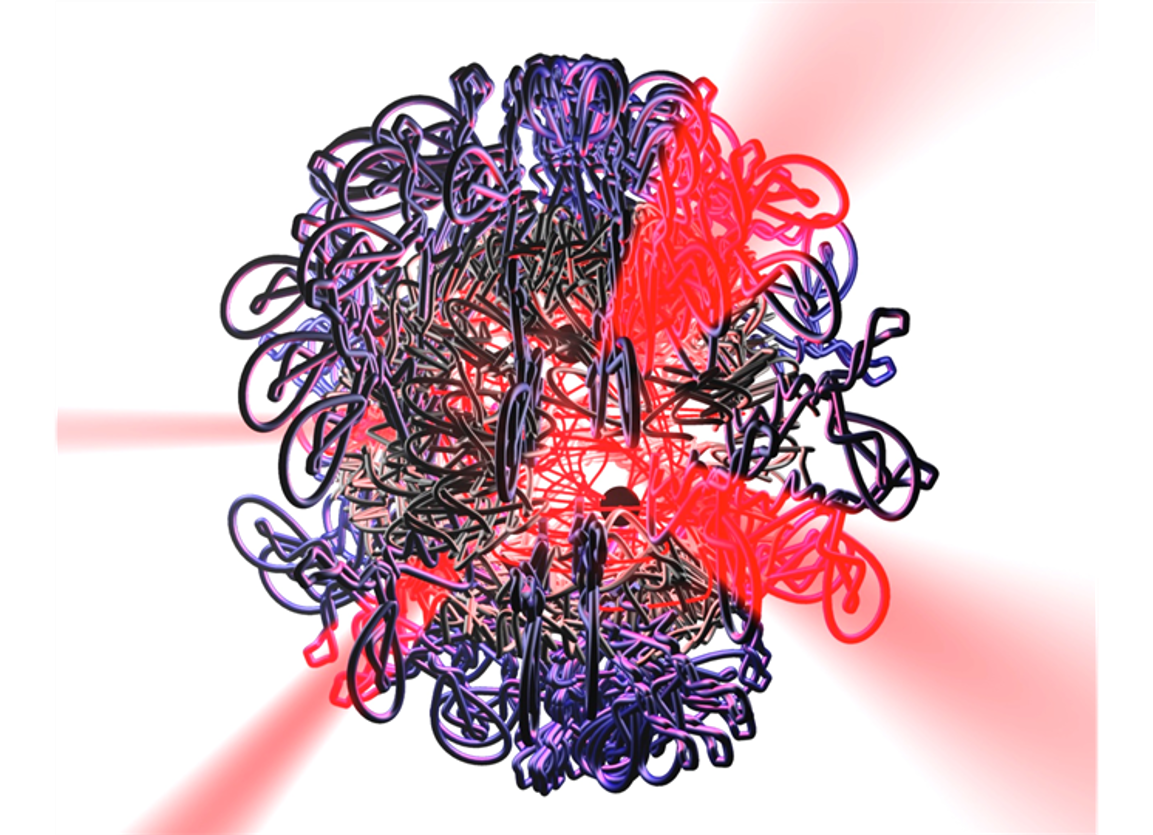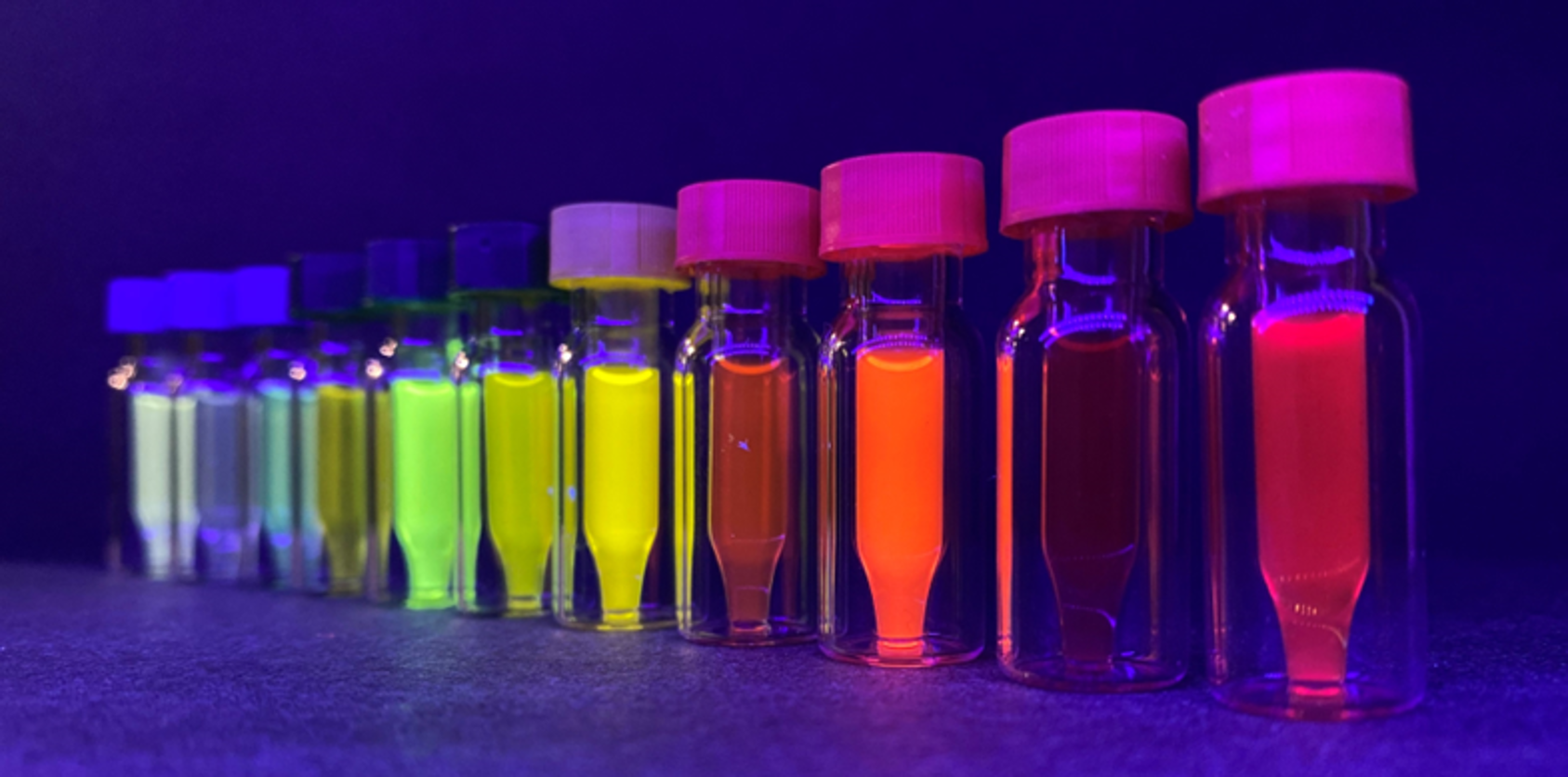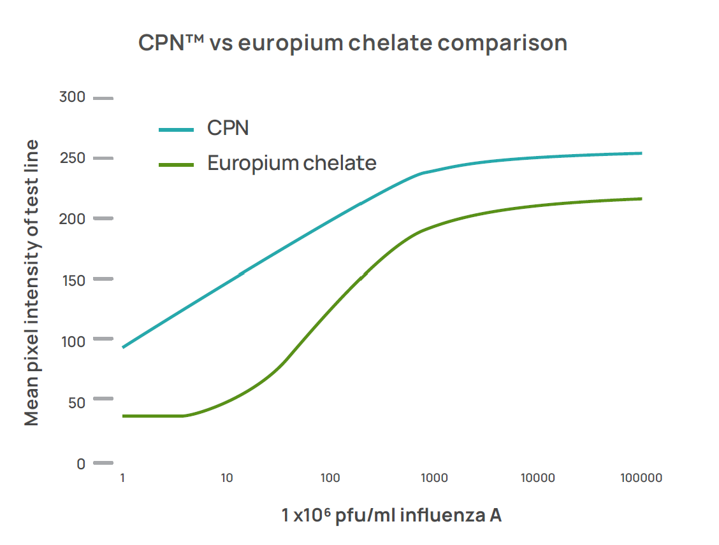At MEDICA 2022, NewsMedical spoke with Andy Chaloner about Stream Bio's conjugated polymer nanoparticle technologies that have the potential to revolutionize the medical and life sciences sectors, from diagnostics to clinical imaging.
Please could you introduce yourself and your role at Stream Bio?
I'm the CEO of Stream Bio. We've been around for about four or five years now, but we've only just come to the commercial market properly in the last 12 months. Prior to that, we concentrated on R&D.
What is Stream Bio and what commercial technologies does it produce?
What we have is a brand new, novel fluorescent reagent for the life science market, concentrating the business strategy in three areas: the reagents market, diagnostics, and in the longer-term, human clinical imaging. We've got collaborations on the go with various universities, medical schools, and industry partners.
Stream Bio leverage conjugated polymer nanoparticles (CPNs) with extensive potential. What are CPNs and what drives the need for them in the medical and life science industries?
What we have is a polymer equivalent to quantum dots only much brighter. The inventor of our product is Professor Mark Green at King's College University, and he's originally a quantum dot scientist by trade. When they started putting quantum dots into biological cells, he recognized the limitations of the toxicity and began to look for an alternative.

Image Credit: Stream Bio
He looked at the conjugated polymers you find inside OLED TV screens and basically what we have is another particle where the polymer chain is scrunched up into a ball. There’s a capping agent around the surface with a whole range of carboxylic groups, and we can adapt the surface chemistry. So we've got maleimide, carboxylic, thiol, amine, alkene, and various kinds of chemistries we can attach antibodies, oligos, and literally anything else to, and we can then use it in virtually any life science application: lateral flows, ELISA, western blot, microscopy, you name it.
We essentially sit at the center of a Venn diagram between physics, chemistry, and biology. The particles are birthed in physics, made in chemistry, and their applications are in biology.
What was the research and development process like for these particles?
We spun Stream Bio out of King's College London, and we still have very strong ties with them. We took it to the government's high-value manufacturing catapult, and with the Formulation Center at the Centre for Process Innovation, we turned what was made in a beaker on a bench into an industrial-scale manufacturing process where we can manufacture very large quantities. That took about 18 months, and at the end of it, we had a manufacturing process, four colors, and one surface chemistry.

Image Credit: Stream Bio
We won an Institute of Physics Business Start-up and Innovation Award in 2018, and on the back of the work with the CPI and the award, we won funding from Innovate UK in one of their initial rounds of the UK Loan Competition. We got about a third of a million pounds and then, over two years, we developed the technology from four colors to sixteen, all the way up to the infrared (1000nm), and we have about five surface chemistries and two types of rapid conjugation kits for antibodies and oligos, all of which has just recently come to market in the last 12 months.
While we've been doing all of that, we've obviously been fostering collaborations with various universities to build the data package and also to look slightly longer-term.
The CPNs you have developed have been tested for use in rapid lateral flow tests. How can these particles improve the use and efficiency of these tests?
COVID came along and we always knew the particles would be exceptionally good at diagnostics, so we collaborated on and developed a lateral flow test.
We tested the unoptimized lateral flow against various variants at Nottingham medical school and got down to TCID50 less than 100 which is equivalent to about 30 to 35 cycles on PCR. So we effectively have PCR sensitivity in a point-of-care test.

Multi-colored LFTs using CPN 830, CPN 770, CPN 610 & CPN 660 to detect ovalbumin. Image Credit: Stream Bio
Now, we've formally teamed up with RAPIvD, who are a contract lateral flow developer. They can see the massive benefit in these particles going forward, so now one element of our business is developing lateral flow tests with RAPIvD using our particles.
What is it about your particles that make lateral flow tests so much more sensitive compared to those we are familiar with?
Standard visual lateral flow tests use colloidal gold, which is a standard red color, or latex beads, and they're limited to a certain level of sensitivity. Our polymers have exceptionally high absorbent coefficients and can be visually read to a higher sensitivity. They are also fluorescent when excited at the correct wavelength. With fluorescence, people think brightness is always measured by quantum yield, but it is actually quantum yield times extinction coefficient. So if you want to get into the physics of it, the polymers absorb an exceptionally high amount of photons and then kick out an average amount out, and it's that extinction coefficient that makes them exceptionally bright and exceptionally absorbent. We did a comparison at UCLA against quantum dots and were 1000 times brighter, and against colloidal gold we were 40% more absorbent.

Lateral flow strips produce stronger signals than europium chelate in a LFT for influenza A. Image Credit: Stream Bio
In a visual lateral flow under normal ambient light, we can deliver multicolored lateral flow tests, beyond red and blue. Imagine a test with four different colors giving four different targets, or a traffic light system of the severity of infection on one strip.
If you then put it in a slightly darkened room or you just excite it with the correct excitation in a reader it then fluoresces. So the same particle does ambient color and fluorescence.
A lot of fluorescent lateral flows that are on the market use europium. We did a head-to-head comparison with europium in a flu A and flu B, and we were a hundred times more sensitive. So we can be used in visual ambient light or fluorescence, we're 40% more absorbent than gold, a hundred times more sensitive than europium in a flu A and flu B test, and we've got a COVID test which demonstrated in 10 minutes PCR sensitivity.

Limit of detection of CPN-based SARS-CoV-2 lateral flow tests⁴. Clear signal seen to TCID⁵⁰ = 100 by the Stream’s LFT reader. Image Credit: Stream Bio
What are some of the other applications of CPNs within diagnostics?
The CPNs can be applied anywhere in diagnostics that require a visual or fluorescent label. We're also developing a reader with an industry partner with a unique camera that takes a photograph of the control and the test line and then integrates the fluorescent signal using an active imaging camera.
The reader we are developing which is at an advanced prototype stage, is handheld, weighs a kilo and a half, waterproof, drop proof, and we can adapt it with Wi-Fi, GPS, and 5G capability with a six-hour rechargeable battery. Ideal for point-of-care in any environment.
You have recently put out a press release announcing the launch of your LINKBRIGHT rapid conjugation kits with Sigma-Aldrich as distributor. With the launch of these kits, how has this expanded the scope of your CPNs’ commercial applications?
With this launch, we have released all 16 colors, all surface chemistries, and the LINKBRIGHT kits, all of which are now available through Sigma-Aldrich.
With the kits, we have created a rapid conjugation capability where we pre-activate the particles. So if someone wanted to do it relatively quickly, they can be done inside 30 minutes.
The significance of Sigma-Aldrich is that it means our technology is now available worldwide through Sigma's distribution system with their promotional and logistical capability to back it up. A lot of companies and universities would automatically go to Sigma, so it gives us a worldwide outlet.

Glioblastoma cancer cells were labelled with CPN 680 (orange) for 24 hours in vitro and then implanted into the chick embryo chorioallantoic membrane at embryonic day 7. Tumours were dissected from the embryo at embryonic day 14, frozen and sectioned. (A) Images show glioblastoma cells (green) remain labelled with CPN 680s (orange) in a highly proliferating environment from single cells to a tumour mass. (B) Images were taken at 40 times magnification to confirm CPNs remained within tumour cells. Images taken in collaboration with the University of Liverpool. Image Credit: University of Liverpool
You have collaborated in the past and continue to work with different universities and researchers on active projects. Could you please tell us about some of the research you are supporting with your CPNs currently?
For instance, we have images in the figure above of glioblastoma cancer cells, and below of bowel cancer cells, colorectal cells, produced with Liverpool University and Leeds medical school. When you try to extract a tumor during surgery, defining the tumor margin possesses issues and there is the risk of taking too little and risking the cancer coming back or taking too much and then causing damage to the patient. If you can really define the tumor and the tumor margins, you can improve surgical outcomes and also even save money in the long-run. This is something our particles are able to do with imaging technology. Professor David Janes at Leeds medical school has been a supporter of us with this project and ongoing projects, and we've got a couple in the pipeline with him as well.
ICG is a clinical imaging reagent that is used in surgeries for imaging tumors and so on. It's in the near-infrared, but it has a lot of drawbacks. It has to be kept cool at four degrees, you must have a certain amount of preparation time to use it, and if you don't use it within a certain number of hours it becomes toxic and quenches in blood. That means it actually reduces the signal. With Liverpool University, we recently finished a project that did a complete comparison between CPNs and ICG in mouse models, and we were off the scale. That research will be published later this year, and what we'd like to do is take that research further down the line of clinical imaging.
We also have another project going on at the moment at Liverpool University sponsoring a Ph.D. student. They are doing a lot of work with stem cells and they've been using our particles to track these cells in chick embryos. The idea here is that, because our particles are so bright and stable, you can track the cells over weeks and months, whereas other dyes would fade after a few hours.
Finally, there is an area of research we're exploring at the moment looking at using infrared particles on lateral flow tests. By doing that, we effectively reduce the background noise to zero, further increasing sensitivity over and above what we can already do.
Over the next decade, are there any currently untapped fields or applications that you would like to approach with your particle technology?
When we were looking at the polymers for infrared particles, we screened a lot of them and found some gave off IR emissions and some gave off none at all. When we discovered this we wanted to know why, as that energy has to go somewhere to transfer and change state. It transpired that they weren’t giving off infrared, but were giving off heat - more than a shortwave carbon nanotube.

CPN 510B linked to anti-carcinoembryonic antigen (CEA) affimer targeting colorectal cancer cells, imaged by the University of Leeds
Shortwave carbon nanotubes have potential applications in photothermal cancer therapies, so we've got the potential to look further down the line at a CPN particle with an antibody to target a tumor cell. If you excite it at the correct IR wavelength, (because it's infrared, it'll penetrate the tissue), you can kill it with heat instead of chemotherapy.
How revolutionary are CPNs for the medical and life sciences industries?
The potential is vast. With regard to diagnostics and lateral flow, in 10 years time, I think they will be the new standard, delivering lab sensitivity in minutes at the point of care.
We like to call it lateral flow 4.0 because lateral flows have always been about latex beads, gold nanoparticles, and europium. We've now got a new reagent that can really blow away the diagnostics industry in terms of sensitivity. Looking further ahead, we have something that could significantly improve fluorescent-guided surgery, improve patient outcomes, and provide an alternative to chemotherapy in the form of Photodynamic Therapy.
We've taken existing technologies, OLED polymers in TV screens, which have been around for decades, and repurposed them for biological applications with extremely exciting results and possibilities.
More from MEDICA 2022: Connecting the Field of Medicine at MEDICA
About Andy Chaloner
 Andrew has coordinated and driven Stream Bio from its origins as a shell company, to the point where its new innovative materials technology and products are on the market. He is an entrepreneur, (not a scientist), an ex-military pilot and Royal Naval Officer with a strong interest in science, and an equally strong background in military operations. This translates into extensive personnel, project and logistical management skills within the biotech sector. On retiring from the Royal Navy Andrew moved into commercial aviation, but it was always his intention to move into business and has been involved in a number of entrepreneurial projects
Andrew has coordinated and driven Stream Bio from its origins as a shell company, to the point where its new innovative materials technology and products are on the market. He is an entrepreneur, (not a scientist), an ex-military pilot and Royal Naval Officer with a strong interest in science, and an equally strong background in military operations. This translates into extensive personnel, project and logistical management skills within the biotech sector. On retiring from the Royal Navy Andrew moved into commercial aviation, but it was always his intention to move into business and has been involved in a number of entrepreneurial projects